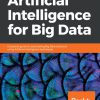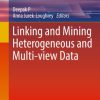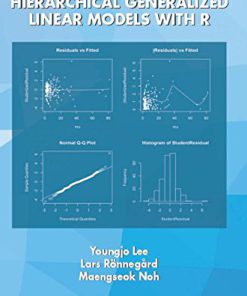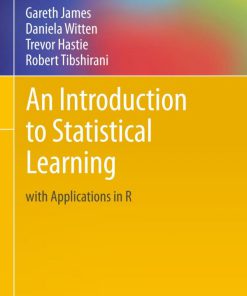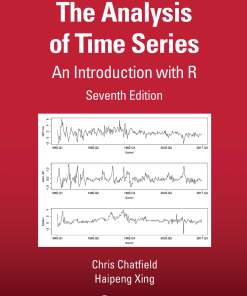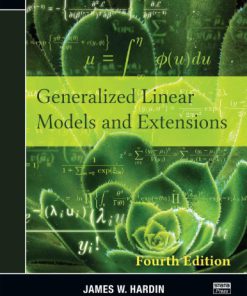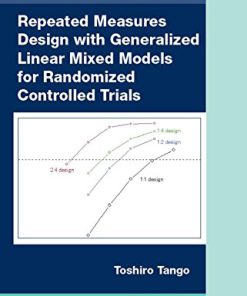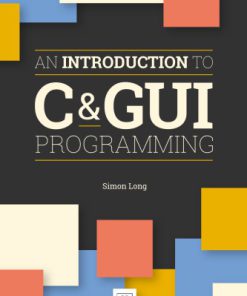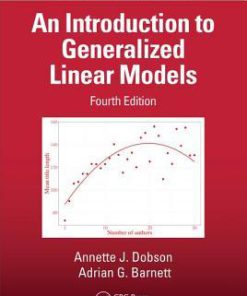Generalized Additive Models: An Introduction With R 2nd Edition by Simon Wood ISBN 1498728375 9781498728379
$50.00 Original price was: $50.00.$25.00Current price is: $25.00.
Generalized Additive Models: An Introduction With R 2nd Edition BY Simon N. Wood – Ebook PDF Instant Download/Delivery: 1498728375, 978-1498728379
Full download Generalized Additive Models: An Introduction With R 2nd Edition after payment
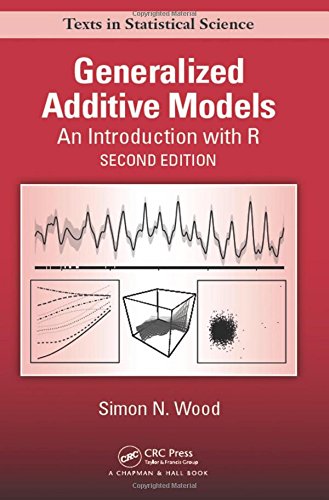
Product details:
ISBN 10: 1498728375
ISBN 13: 978-1498728379
Author: Simon N. Wood
The first edition of this book has established itself as one of the leading references on generalized additive models (GAMs), and the only book on the topic to be introductory in nature with a wealth of practical examples and software implementation. It is self-contained, providing the necessary background in linear models, linear mixed models, and generalized linear models (GLMs), before presenting a balanced treatment of the theory and applications of GAMs and related models.
The author bases his approach on a framework of penalized regression splines, and while firmly focused on the practical aspects of GAMs, discussions include fairly full explanations of the theory underlying the methods. Use of R software helps explain the theory and illustrates the practical application of the methodology. Each chapter contains an extensive set of exercises, with solutions in an appendix or in the book’s R data package gamair, to enable use as a course text or for self-study.
Generalized Additive Models: An Introduction With R 2nd Table of contents:
1. Linear Models
1.1 A Simple Linear Model
- Simple least squares estimation
1.1.1 Sampling properties of β
1.1.2 So how old is the universe?
1.1.3 Adding a distributional assumption - Testing hypotheses about β
- Confidence intervals
1.2 Linear Models in General
1.3 The Theory of Linear Models
- Least squares estimation of β
- The distribution of β
- F-ratio results I
- F-ratio results II
- The influence matrix
- The residuals ϵepsilonϵ and fitted values μmuμ
- Results in terms of X
- The Gauss Markov Theorem: What’s special about least squares?
1.4 The Geometry of Linear Modelling
- Least squares
- Fitting by orthogonal decompositions
- Comparison of nested models
1.5 Practical Linear Modelling
- Model fitting and model checking
- Model summary
- Model selection
- Another model selection example (A follow-up)
- Confidence intervals
- Prediction
- Co-linearity, confounding, and causation
1.6 Practical Modelling with Factors
- Identifiability
- Multiple factors
- ‘Interactions’ of factors
- Using factor variables in R
1.7 General Linear Model Specification in R
1.8 Further Linear Modelling Theory
- Constraints I: General linear constraints
- Constraints II: ‘Contrasts’ and factor variables
- Likelihood
- Non-independent data with variable variance
- Simple AR correlation models
- AIC and Mallows’ statistic
- The wrong model
- Non-linear least squares
- Further reading
1.9 Exercises
2. Linear Mixed Models
2.1 Mixed Models for Balanced Data
- A motivating example
- The wrong approach: A fixed effects linear model
- The right approach: A mixed effects model
2.1.2 General principles
2.1.3 A single random factor
2.1.4 A model with two factors
2.1.5 Discussion
2.2 Maximum Likelihood Estimation
- Numerical likelihood maximization
2.3 Linear Mixed Models in General
2.4 Linear Mixed Model Maximum Likelihood Estimation
- The distribution of b∣y,βb | y, betab∣y,β given θthetaθ
- The distribution of βbetaβ given θthetaθ
- The distribution of θthetaθ
- Maximizing the profile likelihood
- REML
- Effective degrees of freedom
- The EM algorithm
- Model selection
2.5 Linear Mixed Models in R
- Package nlme
- Tree growth: An example using lme
- Several levels of nesting
- Package lme4
- Package mgcv
2.6 Exercises
3. Generalized Linear Models (GLMs)
3.1 GLM Theory
- The exponential family of distributions
- Fitting generalized linear models
- Large sample distribution of βbetaβ
- Comparing models
- Deviance
- Model comparison with unknown ϕphiϕ
- AIC
- Estimating ϕphiϕ, Pearson’s statistic, and Fletcher’s estimator
- Canonical link functions
- Residuals: Pearson residuals, Deviance residuals
- Quasi-likelihood
- Tweedie and negative binomial distributions
- The Cox proportional hazards model for survival data: Cumulative hazard and survival functions
3.2 Geometry of GLMs
- The geometry of IRLS
- Geometry and IRLS convergence
3.3 GLMs with R
- Binomial models and heart disease
- A Poisson regression epidemic model
- Cox proportional hazards modelling of survival data
- Log-linear models for categorical data
- Sole eggs in the Bristol Channel
3.4 Generalized Linear Mixed Models
- Penalized IRLS
- The PQL method
- Distributional results
3.5 GLMMs with R
- glmmPQL
- gam
- glmer
3.6 Exercises
4. Introducing GAMs
4.1 Introduction
4.2 Univariate Smoothing
- Representing a function with basis expansions
- A very simple basis: Polynomials
- The problem with polynomials
- The piecewise linear basis
- Using the piecewise linear basis
- Controlling smoothness by penalizing wiggliness
- Choosing the smoothing parameter, A, by cross-validation
- The Bayesian/mixed model alternative
4.3 Additive Models
- Penalized piecewise regression representation of an additive model
- Fitting additive models by penalized least squares
4.4 Generalized Additive Models
4.5 Summary
4.6 Introducing Package mgcv
- Finer control of gam
- Smooths of several variables
- Parametric model terms
- The mgcv help pages
4.7 Exercises
5. Smoothers
5.1 Smoothing Splines
- Natural cubic splines are smoothest interpolators
- Cubic smoothing splines
5.2 Penalized Regression Splines
5.3 Some One-Dimensional Smoothers
- Cubic regression splines
- A cyclic cubic regression spline
- P-splines
- P-splines with derivative-based penalties
- Adaptive smoothing
- SCOP-splines
5.4 Some Useful Smoother Theory
- Identifiability constraints
- ‘Natural’ parameterization, effective degrees of freedom, and smoothing bias
- Null space penalties
5.5 Isotropic Smoothing
- Thin plate regression splines
- Thin plate splines
- Properties of thin plate regression splines
- Knot-based approximation
- Duchon splines
- Splines on the sphere
- Soap film smoothing over finite domains
5.6 Tensor Product Smooth Interactions
- Tensor product bases
- Tensor product penalties
- ANOVA decompositions of smooths
- Numerical identifiability constraints for nested terms
- Tensor product smooths under shape constraints
- An alternative tensor product construction: What is being penalized?
5.7 Isotropy versus Scale Invariance
5.8 Smooths, Random Fields, and Random Effects
- Gaussian Markov random fields
- Gaussian process regression smoothers
5.9 Choosing the Basis Dimension
5.10 Generalized Smoothing Splines
5.11 Exercises
6. GAM Theory
6.1 Setting up the Model
- Estimating βbetaβ given λlambdaλ
- Degrees of freedom and scale parameter estimation
- Stable least squares with negative weights
6.2 Smoothness Selection Criteria
- Known scale parameter: UBRE
- Unknown scale parameter: Cross-validation
- Leave-several-out cross-validation
- Problems with ordinary cross-validation
- Generalized cross-validation
- Double cross-validation
- Prediction error criteria for the generalized case
- Marginal likelihood and REML
- The problem with log |Sλlambdaλ|+
- Prediction error criteria vs marginal likelihood
- Unpenalized coefficient bias
6.3 Computing the Smoothing Parameter Estimates
6.4 The Generalized Fellner-Schall Method
- General regular likelihoods
6.5 Direct Gaussian Case and Performance Iteration (PQL)
- Newton optimization of the GCV score
- REML, log |Sλlambdaλ|+ and its derivatives
6.6 Direct Nested Iteration Methods
- Prediction error criteria
- Example: Cox proportional hazards model
6.7 Initial Smoothing Parameter Guesses
6.8 GAMM Methods
- GAMM inference with mixed model estimation
6.9 Bigger Data Methods
6.10 Posterior Distribution and Confidence Intervals
- Nychka’s coverage probability argument
- Interval limitations and simulations
- Whole function intervals
- Posterior simulation in general
6.11 AIC and Smoothing Parameter Uncertainty
- Smoothing parameter uncertainty
- A corrected AIC
6.12 Hypothesis Testing and p-values
- Approximate p-values for smooth terms
- Approximate p-values for random effect terms
- Testing a parametric term against a smooth alternative
- Approximate generalized likelihood ratio tests
6.13 Other Model Selection Approaches
6.14 Further GAM Theory
- The geometry of penalized regression
- Backfitting GAMs
6.15 Exercises
7. GAMs in Practice: mgcv
7.1 Specifying Smooths
- How smooth specification works
7.2 Brain Imaging Example
- Preliminary modelling
- Would an additive structure be better?
- Isotropic or tensor product smooths?
- Detecting symmetry (with by variables)
- Comparing two surfaces
- Prediction with
predict.gam - Variances of non-linear functions of the fitted model
7.3 A Smooth ANOVA Model for Diabetic Retinopathy
7.4 Air Pollution in Chicago
- A single index model for pollution-related deaths
- A distributed lag model for pollution-related deaths
7.5 Mackerel Egg Survey Example
- Model development
- Model predictions
- Alternative spatial smooths and geographic regression
7.6 Spatial Smoothing of Portuguese Larks Data
7.7 Generalized Additive Mixed Models with R
- A space-time GAMM for sole eggs
- Soap film improvement of boundary behavior
- The temperature in Cairo
- Fully Bayesian stochastic simulation:
jagam - Random wiggly curves
7.8 Primary Biliary Cirrhosis Survival Analysis
- Time dependent covariates
7.9 Location-Scale Modelling
- Extreme rainfall in Switzerland
7.10 Fuel Efficiency of Cars: Multivariate Additive Models
7.11 Functional Data Analysis
- Scalar on function regression: Prostate cancer screening
- A multinomial prostate screening model
- Function on scalar regression: Canadian weather
7.12 Other Packages
7.13 Exercises
People also search for Generalized Additive Models: An Introduction With R 2nd :
simon wood generalized additive models
when to use generalized additive models
hierarchical generalized additive models
practical variable selection for generalized additive models
introduction to generalized additive models
Tags:
Simon Wood,Generalized,Additive,Models:,Introduction 2nd
You may also like…
Medicine - Dentistry
Mathematics
Data analysis using hierarchical generalized linear models with R 1st Edition Youngjo Lee
Computers - Computer Science
Mathematics - Mathematical Statistics
Biology and other natural sciences
Getting Started with R: An Introduction for Biologists 2nd Edition Andrew Beckerman
Computers - Programming


